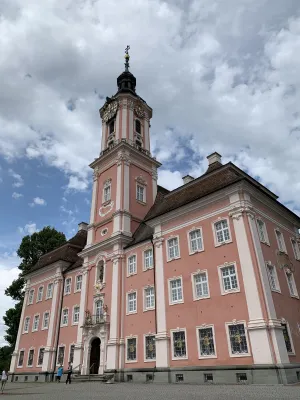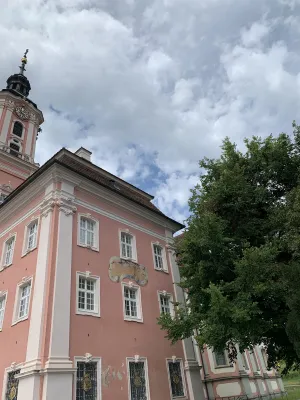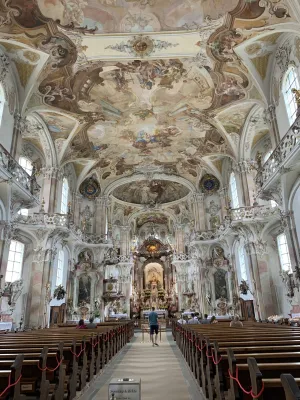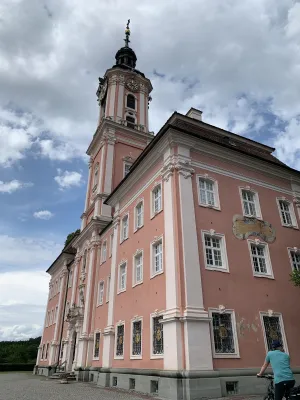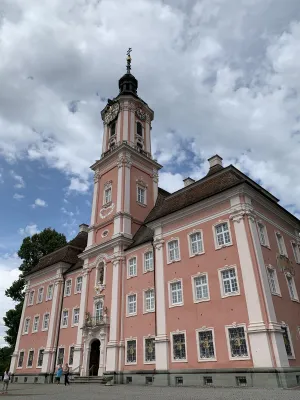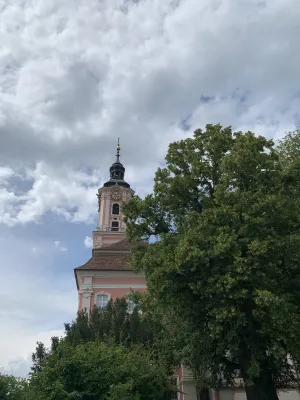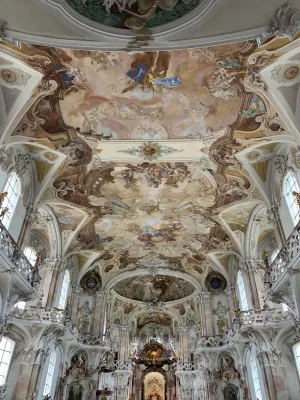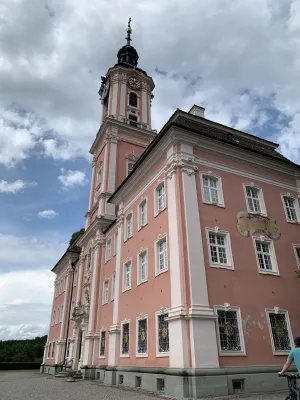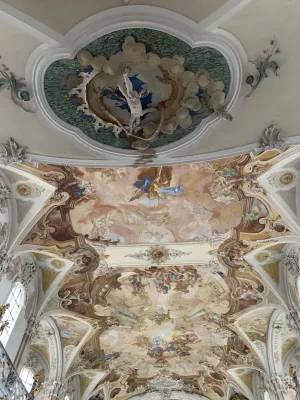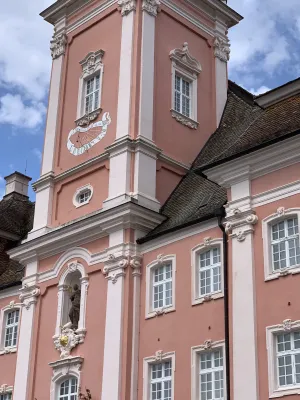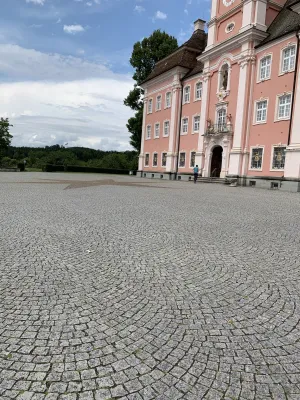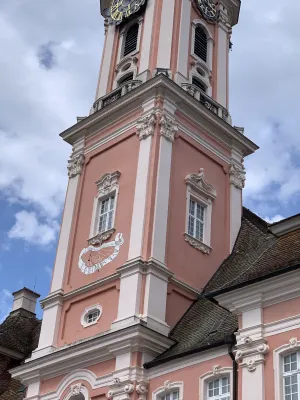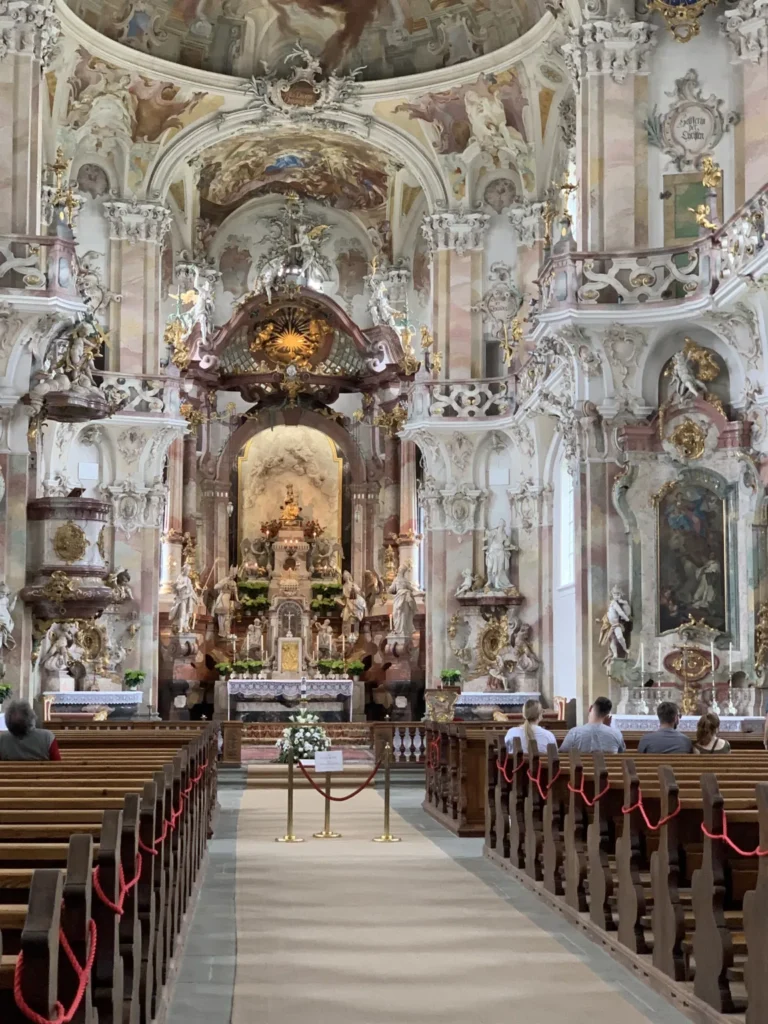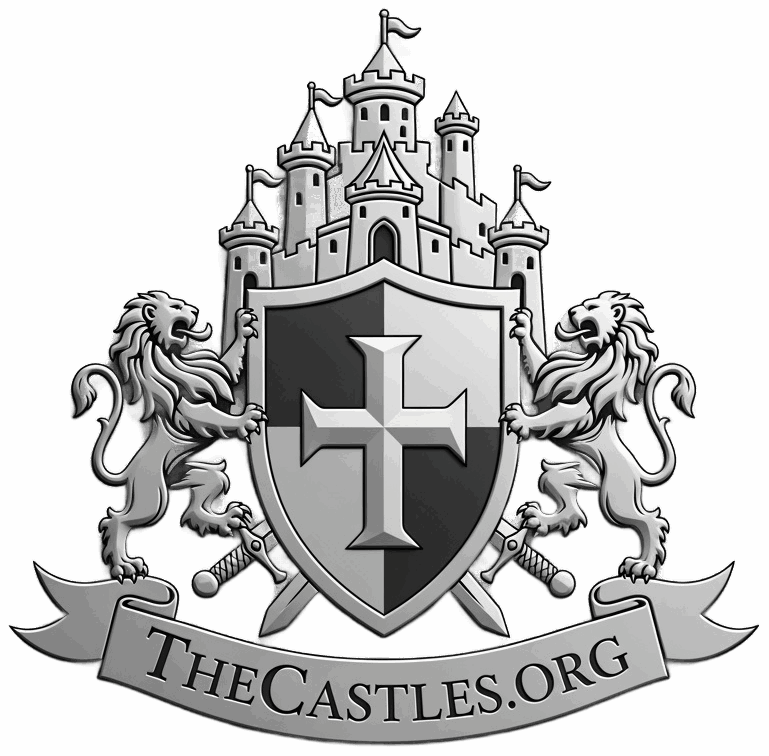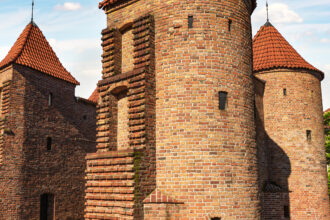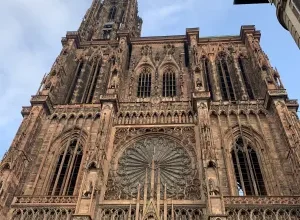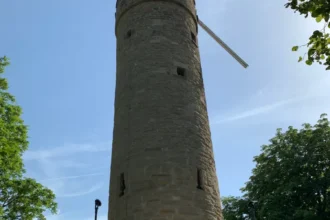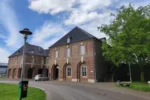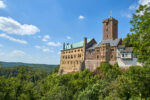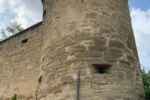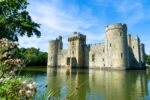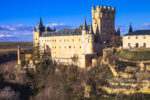Surrounded by orchards and vineyards, not far from the shores of Lake Constance, stands the Basilica of St. Mary in Birnau. This Baroque jewel was commissioned by Salem Abbey under Abbot Anselm II Schwab and built according to the plans of architect Peter Thumb on the site of a pilgrimage church that had stood there since the early Middle Ages. Thanks to the 80-centimeter-tall statue of the Virgin Mary, which was erected in 1420 and was said to perform miracles, it became a popular place of pilgrimage. From 1384 until the pilgrimage church was closed in 1808 in the course of secularization, it was looked after by the Cistercian monks of Salem Abbey. The church was reopened in 1919 by the Bregenz Territorial Abbey of Wettingen-Mehrerau. During World War II, the pilgrimage church and monastery were closed by the National Socialists from 1941 to 1945. This is commemorated by the small cemetery not far from the pilgrimage church with its hundred graves of prisoners killed at the Überlingen-Aufkirch concentration camp. In 1971, Pope Paul VI elevated the church to the rank of basilica, which is now one of the most visited sights on Lake Constance. This is not only due to its fantastic location high above the vineyards and its imposing appearance with its 51-meter bell tower, but also to its magnificent Baroque interior. In addition to seven altars, three ceiling frescoes, the enormous organ, and ten clocks, including three sundials on the rectory, four tower clocks, and three clocks in the church, one of which is a moon clock, all lines of the sacred building and the picturesque and sculptural imagery are directed toward the high altar, above which the legendary late Gothic image of grace is enthroned. The Birnau Basilica offered me a magnificent view of Lake Constance in a dreamlike setting of vineyards and meadows and inspired me with its beautiful architecture and magnificent interior, which is decorated in the ornamental Rococo style.
